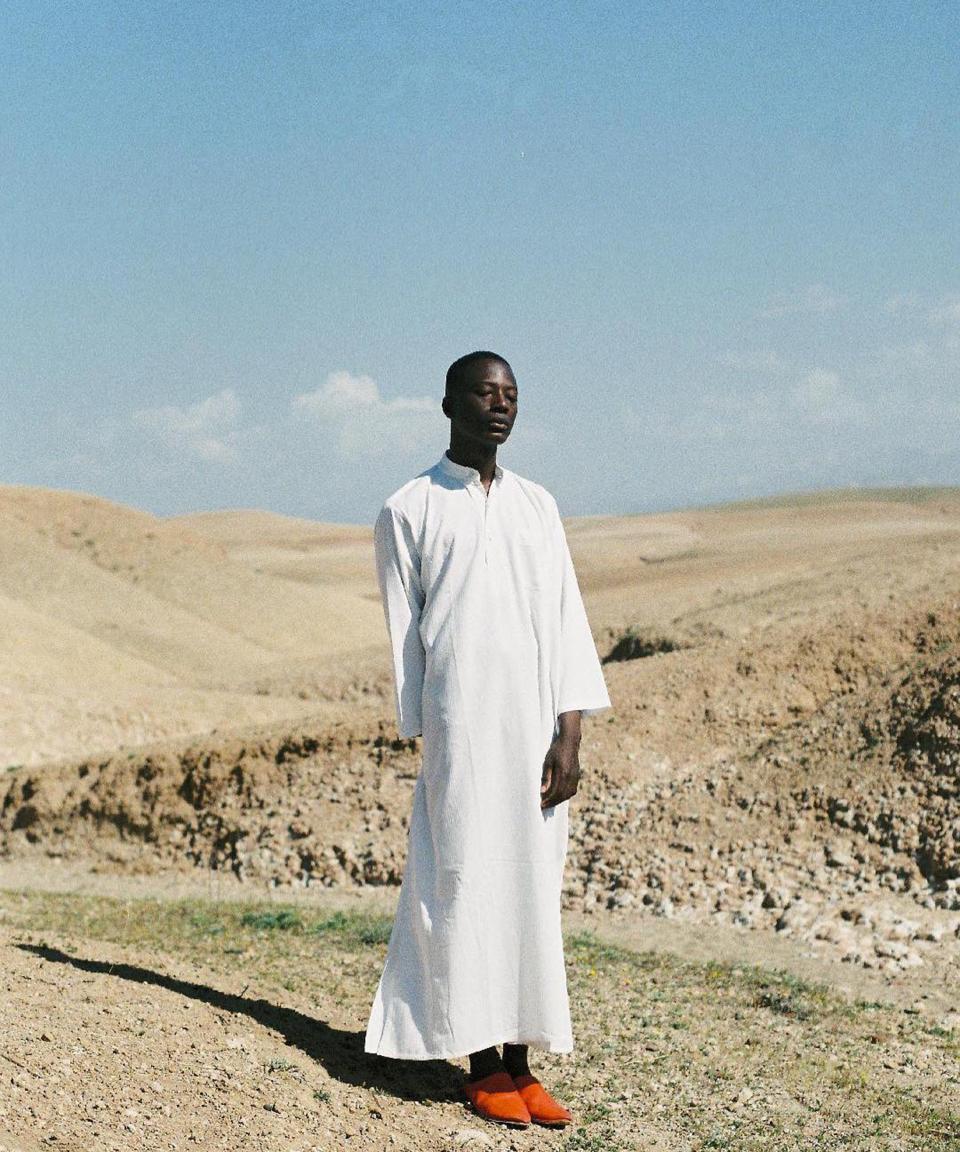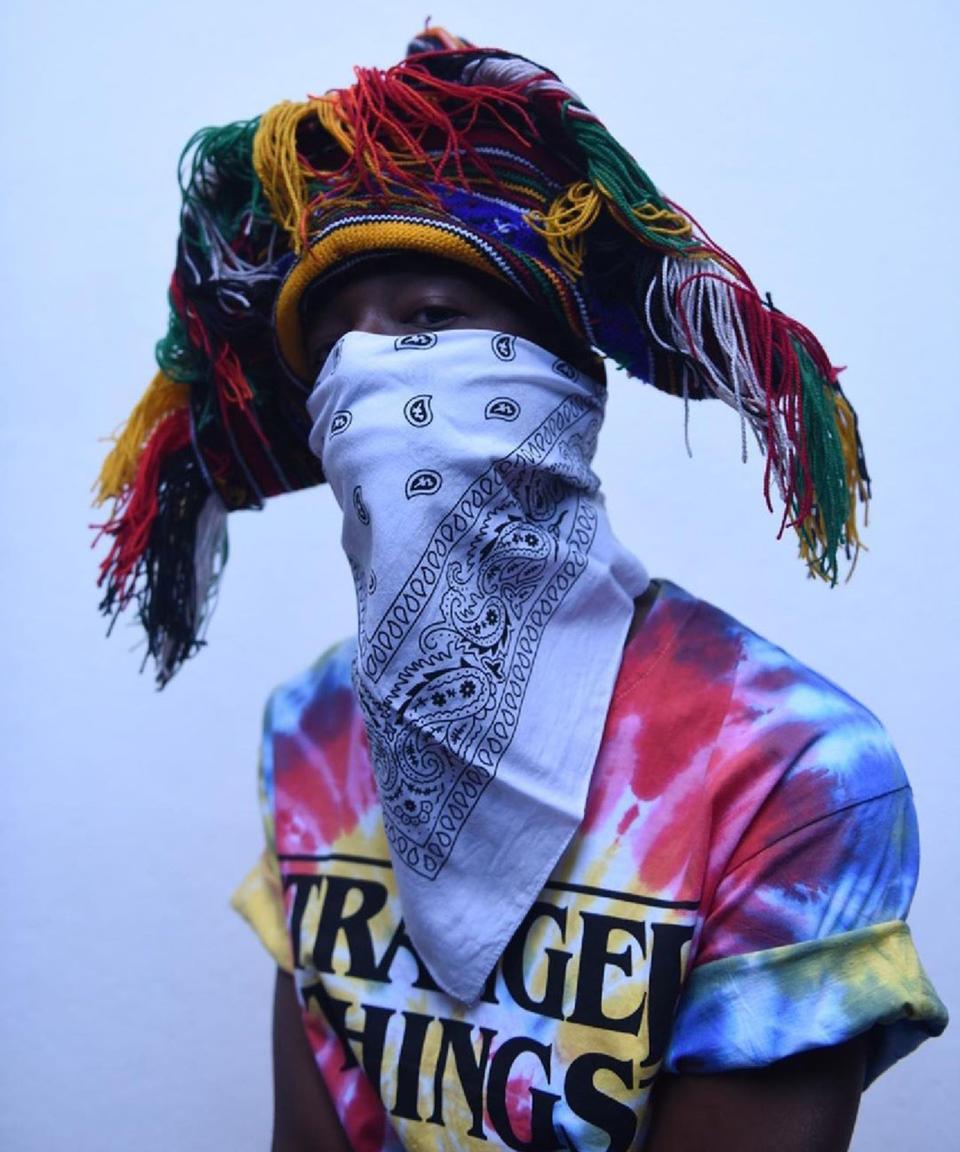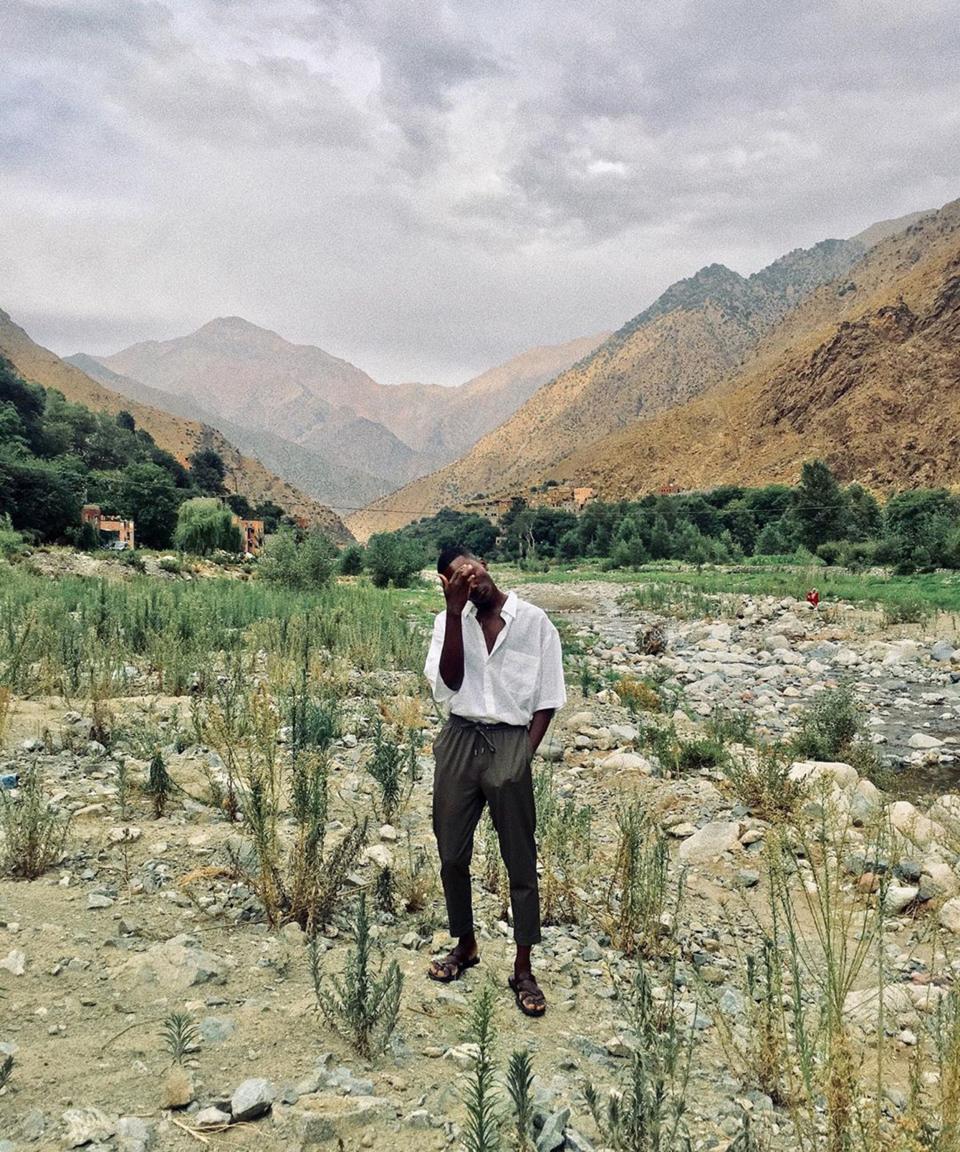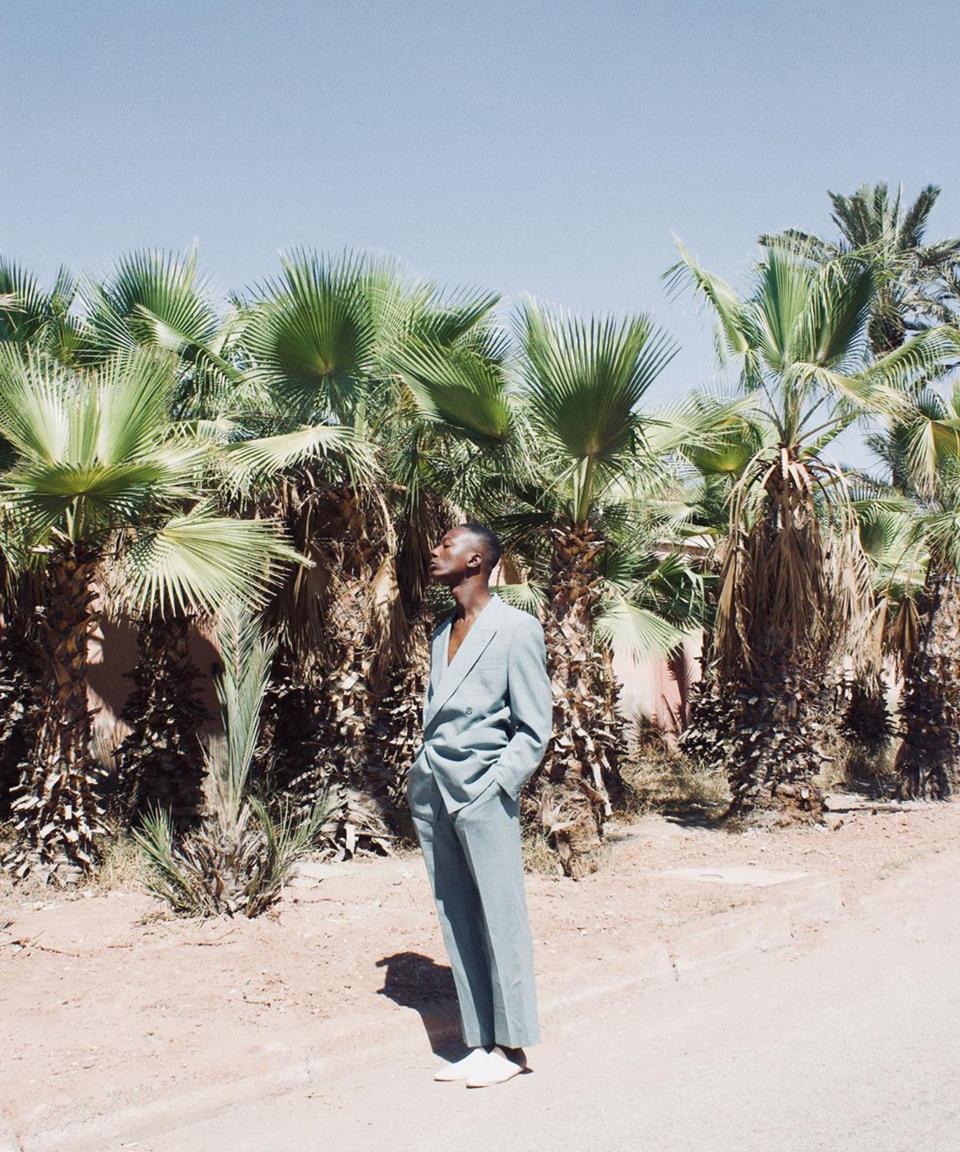Meet the Elegant Creative From Côte d’Ivoire Who Wears the Whole World on His Sleeve
For the uninitiated, the legendary souks of Marrakech—with their endless market stalls offering everything from bone-and-resin end tables to hand-printed linens—can seem a bit daunting. Patrice Kouadio, 27, knows his way around. Though he was born farther down the African coast, in Côte d’Ivoire, he fell in love with his adopted Morocco after moving there for school and has fully embraced the local style. In the summer months he proudly rocks the backless leather slippers called babouches. “It’s the chicest. It’s classic but authentic—not like a shoe from Zara! I wear them in black, white, orange, brown,” he says. “And I have a seller in the Medina [the old city] who sells me the best quality babouche. You know a good babouche by tapping on the heel. If it’s very hard, it’s a good babouche; if it’s not, don’t buy it.”

Kouadio says he has always had a flair for fashion. Today he works in Marrakech, doing social media for the Museum of African Contemporary Art Al Maaden (MACAAL), but he’s kept close ties with his hometown of Abidjan, the bustling, sophisticated commercial capital of the Ivory Coast. “In Abidjan it’s a mix—people might wear a T-shirt with pants and, right next to them, another person will be in traditional fabrics,” he says. West Africa is known for its textiles and tailors, and Kouadio’s father used to have his own clothes custom-made. Kouadio also comes from a long line of weavers who specialized in le pagne Baoulé, a beautiful fabric specific to his ethnic group, Les Baoulés, which hail from the center of the country. “It’s similar to kente from Ghana, a very high-quality handmade fabric—not a print. You’d wear it for ceremonies and celebrations, like weddings,” he says. “My uncle made pagne Baoulé and when I was a kid we would visit the village and I would see him sell it in the market.”

Kouadio says that moving from a country so rich in its own traditions to Morocco, a place with its own specific style heritage, has made him think of his wardrobe as a blend of traditions and influences—new and old, the classic and the cutting edge. “In Marrakech, there are the locals, but tourists also bring their own style, the European way, for instance. So I mix my culture, like the wax fabrics, with the Moroccan styles and maybe something like a basketball sneaker.” One essential is the oversized pant. “I dress for comfort. I like it to be free, to be very easy,” he says. “It’s good in hot weather.” He also likes mixing in vintage clothing like trousers that he finds at Souk el Khemis, a special souk north of the Medina. “I love being inspired by the past,” he says. “Something old can feel so relevant to now.”

Kouadio will soon bring all of this knowledge to bear for a new clothing line called TRAVEL, which is influenced by the warm colors of Marrakech, like the dusty ochre walls of the Medina. He is also making a matching shirt and pant in summery gold inspired by the strong African sun. “It will be like a postcard from Marrakech,” he says of his line. “Travel permits you to know yourself. I want to celebrate that beautiful feeling.”

For both the line and for his personal wardrobe, he buys fabrics in the markets (including a thick gray-and-white cotton that reminds him of the snow in the Atlas Mountains city of Oukaïmeden). He then works with tailors in Marrakech—one local and one who came from Senegal—to bring his designs to life. “A shirt can represent your personality—clothes can reflect who we are,” he says. Kouadio feels like he has seen a lot in his short life, and he wants to wear that on his sleeve. “When I’m inspired to create, I feel like I can do anything.”
Originally Appeared on Vogue

